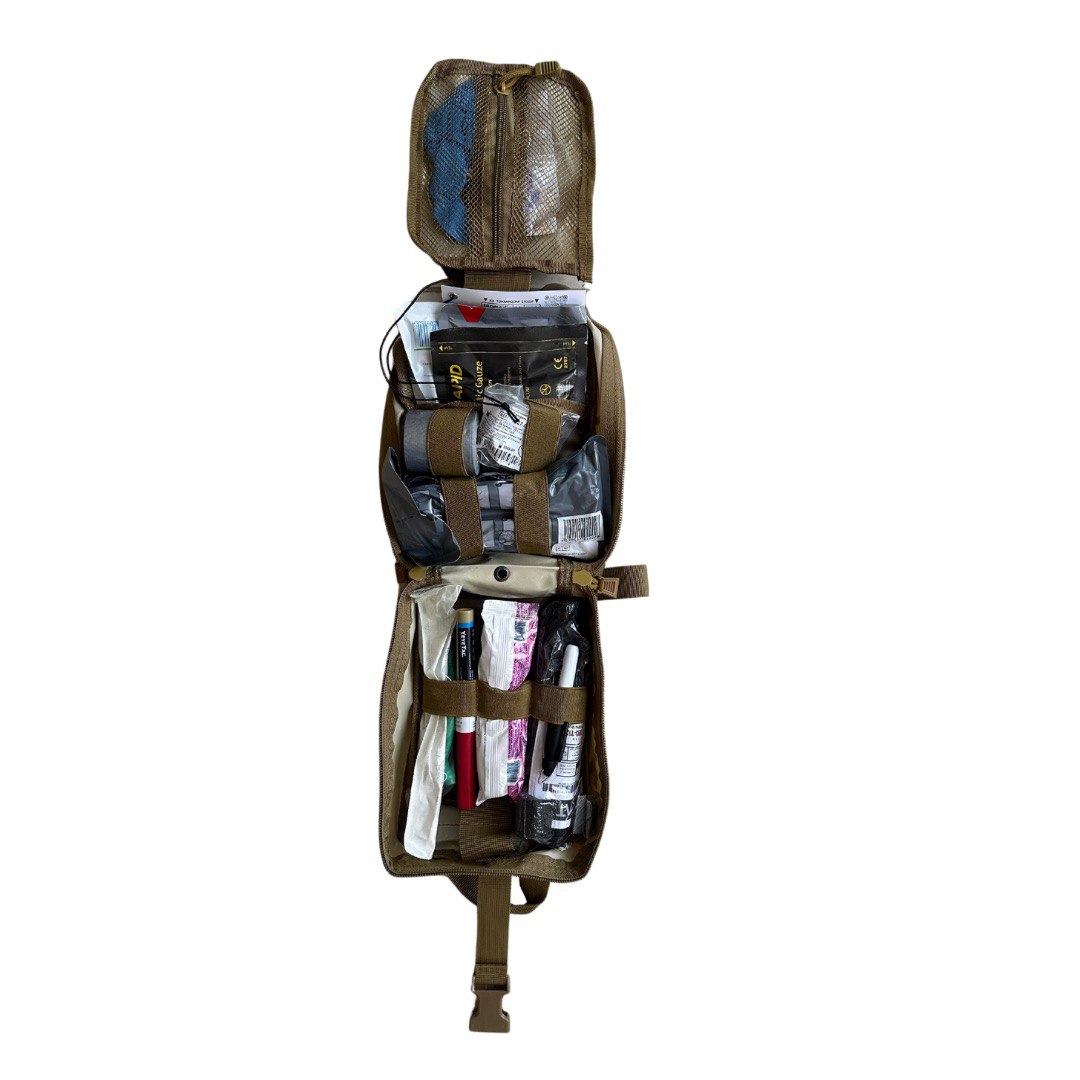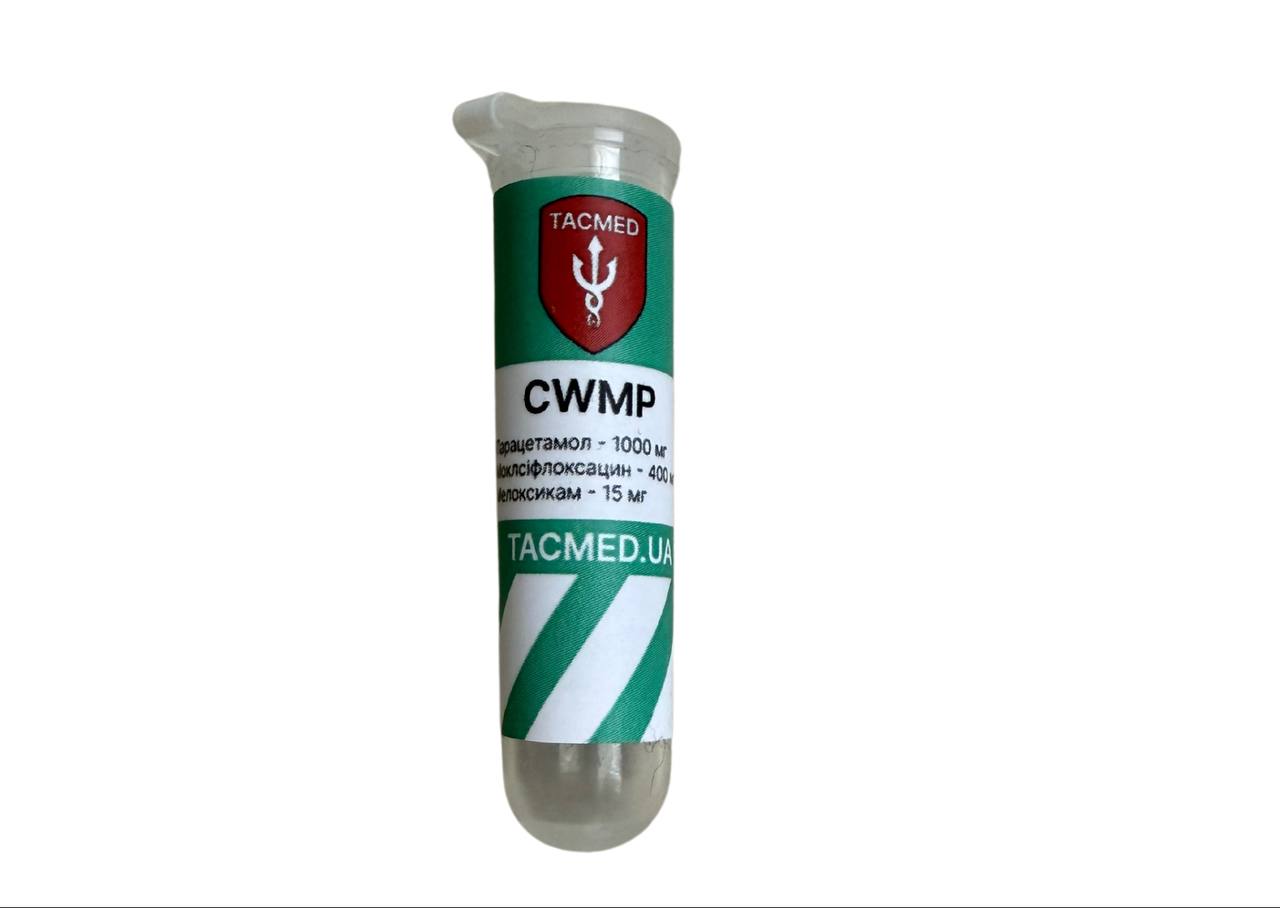Post-traumatic stress disorder in the military: signs and symptoms
Content
- What is PTSD in the military?
- How PTSD occurs
- Main symptoms of PTSD
- Types of post-traumatic stress reactions
- Which people can have PTSD
- Rehabilitation of military personnel with PTSD
- Self-regulation of the nervous system
- The benefits of movement
- Help from loved ones
- General body care
- Professional help
- Treatment of PTSD
- Prevention of PTSD
- Conclusion
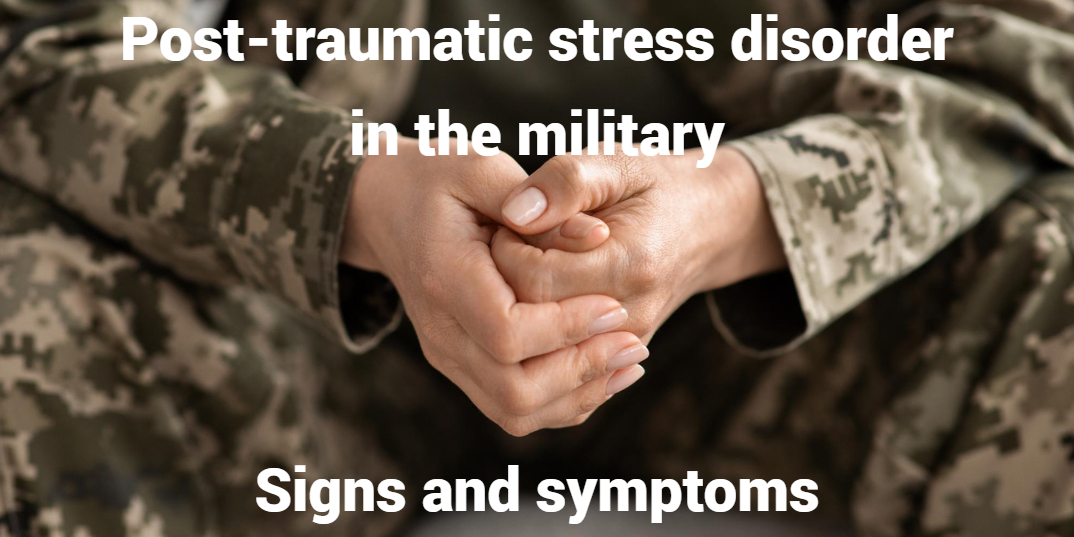
War leaves behind not only physical wounds, but also deep psychological consequences. Post-traumatic stress disorder (PTSD) is one of the most serious problems faced by the military after returning from the combat zone.
Pain, loss, constant threat to life, and the need to make decisions under mortal risk all have the potential to traumatise the psyche of even the most resilient.
Despite the widespread stereotype, not all military personnel develop PTSD. However, those who have survived combat are at increased risk. Sleep disturbances, intrusive memories, irritability, emotional detachment, or, conversely, excessive vigilance are just some of the signs that may indicate the onset of the disorder.
This material will help you better understand what PTSD in the military is, how it manifests itself, who is most vulnerable to this condition and how to deal with it. Understanding is the first step towards support, treatment and a return to a full life.
What is PTSD in the military?
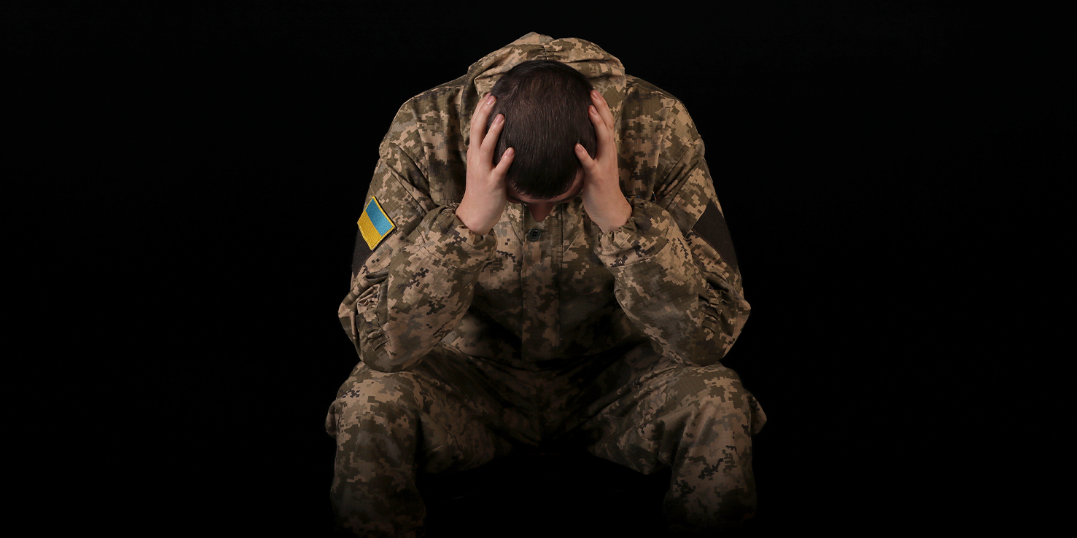
Post-traumatic stress disorder (PTSD) is a mental condition that occurs after experiencing an extremely traumatic situation. In the military, PTSD most often develops as a response to combat trauma: a threat to life, witnessing the death of colleagues, participation in combat, being wounded or captured. These events are so strong that the psyche does not have time to process them, and as a result, the nervous system seems to be ‘stuck’ in a constant state of anxiety.
In this state, the body continues to act as if the danger is still around. A person with PTSD relives the trauma over and over again in memories, dreams, or even with minor external triggers - sounds, smells, news. It's not just a ‘bad mood’ or ‘ordinary fatigue’: PTSD significantly affects behaviour, emotional perception of the world, social relationships and quality of life in general.
The peculiarity of PTSD in the military is its close connection with combat experience. Many symptoms that are considered pathological in civilian life could be normal or even a life-saving reaction at the front. That is why this disorder requires a separate understanding and approach to care.
How PTSD occurs
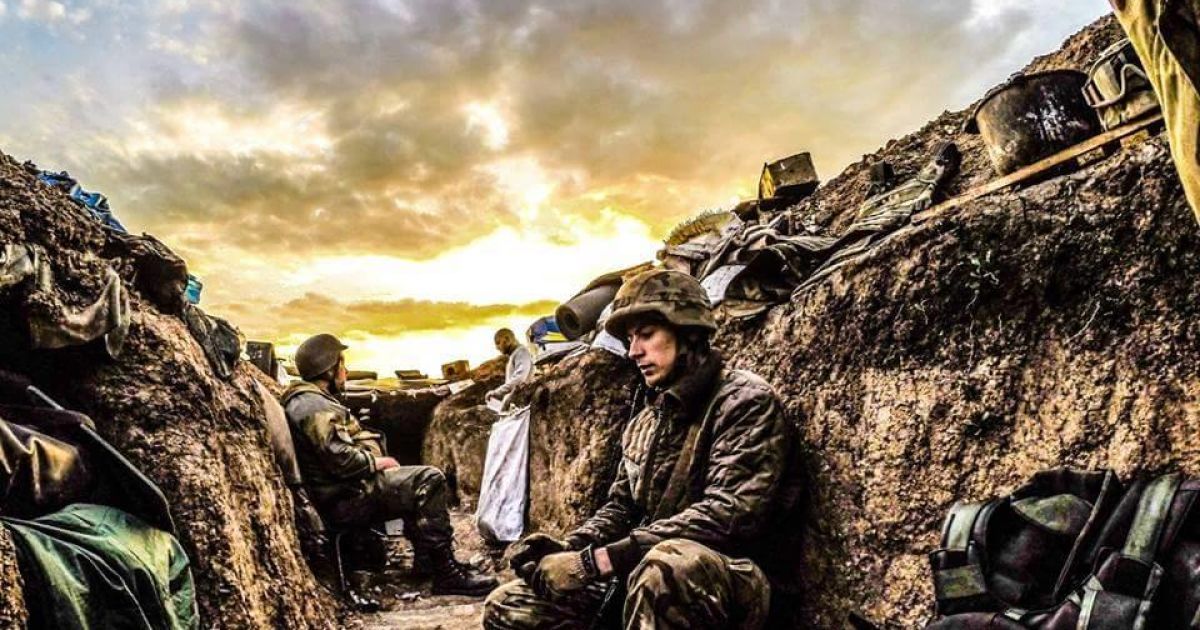
Post-traumatic stress disorder does not appear suddenly. It is the result of a deep psychological trauma that the body has not been able to fully live through and process. In the military, PTSD most often occurs after direct participation in hostilities, when the situation threatened life or required action contrary to basic moral principles. The trigger may be the death of a colleague, contusion, injury, captivity or shelling, or the use of lethal weapons.
After a traumatic event, the nervous system is activated to survive: norepinephrine is produced, and the amygdala, the centre of emotional response, becomes more active. This causes increased vigilance, a ‘fight or flight’ reaction. Normally, this reaction fades away after the threat is over, but in the case of PTSD, it persists even when the threat has passed.
The body remains in a state of constant mobilisation. The prefrontal cortex, the area of the brain responsible for logic and analysis, becomes inactive. The hippocampus, which is responsible for structuring memory, works erratically. As a result, a person experiences the same emotions over and over again, as if the event is still going on. This causes chronic psycho-emotional exhaustion, which is the basis of PTSD.
Main symptoms of PTSD
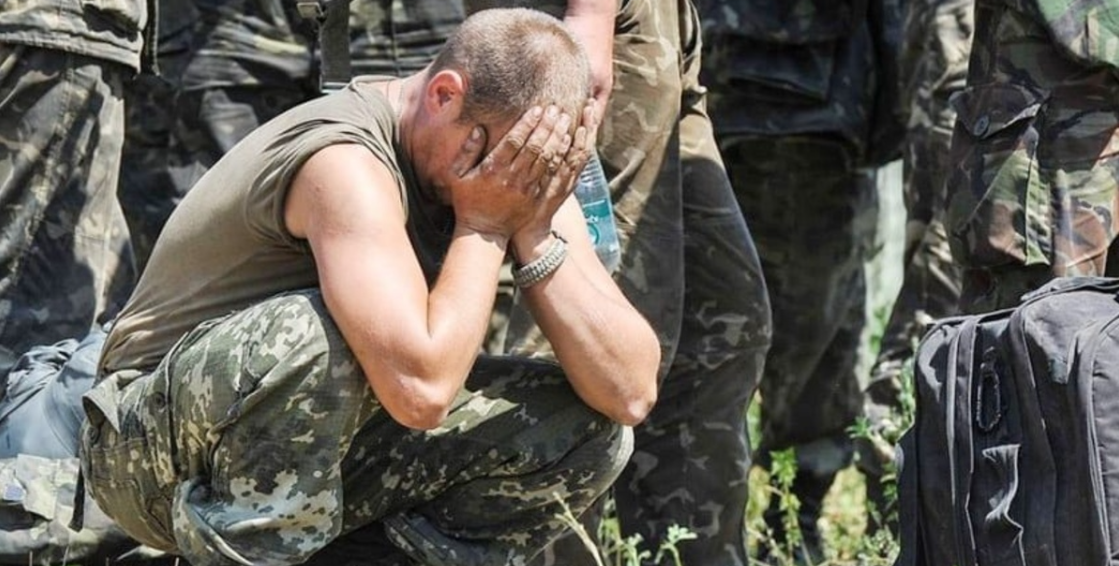
Post-traumatic stress disorder in the military can manifest itself in many different ways, but there are a number of characteristic symptoms that indicate a disruption in the nervous system.
They usually develop gradually - sometimes immediately after a traumatic event, sometimes months or even years after returning from the frontline.
Most often, PTSD symptoms are divided into four groups:
- Trauma re-experiencing is an intrusive memory, nightmares, flashbacks, when a soldier suddenly ‘returns’ to a combat situation. Such episodes are accompanied by strong emotional and physical reactions, such as heart palpitations, trembling, sweating, and panic.
- Avoidance is the conscious or unconscious avoidance of anything that might remind you of the event: people, places, conversations, smells, news. It can also manifest itself in a loss of interest in things that used to be important.
- Negative changes in thinking and emotions - a person may lose the ability to feel joy, begins to see the world as threatening and hopeless. Feelings of guilt, shame, and emotional numbness appear.
- Hyper-arousal means constant alertness, sleep problems, irritability, outbursts of anger, and reckless behaviour. It is as if a person cannot ‘switch off’ from the combat mode.
Such symptoms are not only emotionally draining, but also have a negative impact on relationships with loved ones, performance, and overall quality of life. If they last longer than a month, it's time to seek help.
Types of post-traumatic stress reactions
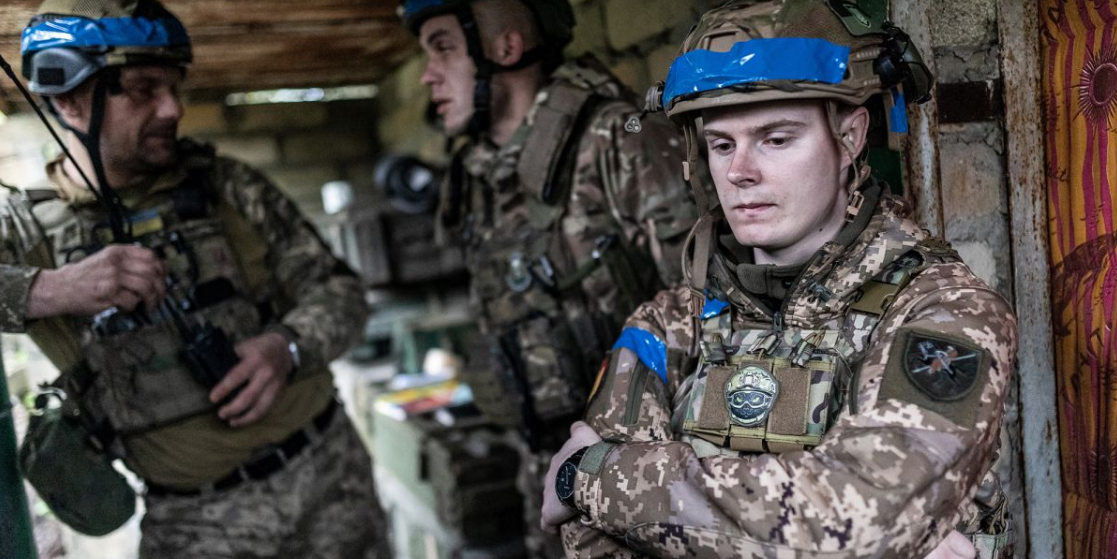
Post-traumatic reactions in the military do not always have the same intensity or duration - it depends on the nature of the event, personal experience and availability of support. There are several forms of PTSD that differ in the course and timing of their manifestation.
An acute stress reaction occurs in the first hours or days after a traumatic event. A person may be in a state of shock, lose touch with reality, and have physiological symptoms such as dizziness, palpitations, and sleep disorders. In most cases, this reaction disappears on its own as soon as the threat stops and support appears.
Acute stress disorder manifests itself within the first 30 days after the event. It is characterised by well-defined symptoms of PTSD, such as flashbacks, anxiety, avoidance, and hyper-arousal. If the symptoms do not resolve during this time, they may progress to PTSD.
PTSD is diagnosed when symptoms last for more than a month. This is the most stable form of the disorder, requiring a comprehensive approach to treatment.
Delayed onset PTSD occurs many months after the event - sometimes even after a year. It is often triggered by a new stressor or event that reminds of a previous trauma.
Complex PTSD (CPTSD) occurs after prolonged or repeated exposure to traumatic factors: captivity, torture, prolonged exposure to shelling. In such cases, not only the emotional state is affected, but also self-identity, relationships with others, and perception of the world.
Which people can have PTSD
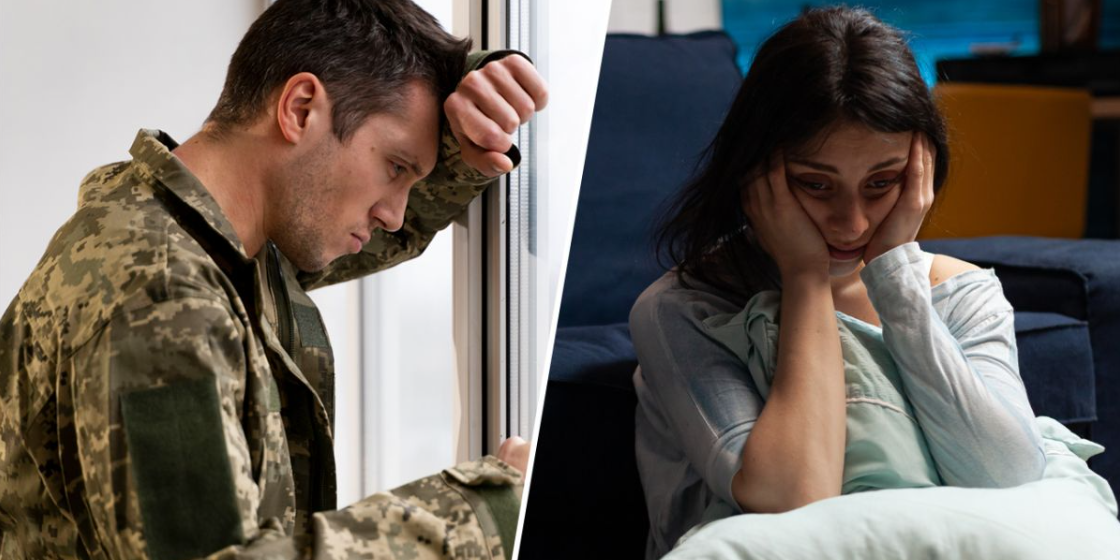
Post-traumatic stress disorder can develop in anyone who has experienced or witnessed events that threatened life, safety or moral principles. However, not all trauma survivors experience PTSD - according to various studies, about 10-20% of people who have been at high risk develop symptoms.
The most vulnerable to PTSD are military personnel, especially those who:
- lost comrades-in-arms or witnessed a massacre;
- was wounded, contused, captured or surrounded;
- was under fire or on the front line for a long time;
- felt powerless in life-threatening situations;
- had a history of mental trauma or previous episodes of anxiety disorders.
In addition to the military, civilians who have experienced occupation, evacuation under fire, loss of relatives or terrorist attacks are also at risk. It is especially dangerous when the trauma occurs repeatedly or is superimposed on existing instability - in such cases, the risk of developing chronic PTSD increases significantly.
Special attention should be paid to those who do not seek help for fear of judgement or loss of authority. Stigma around mental health is one of the main barriers to timely diagnosis and treatment.
Rehabilitation of military personnel with PTSD
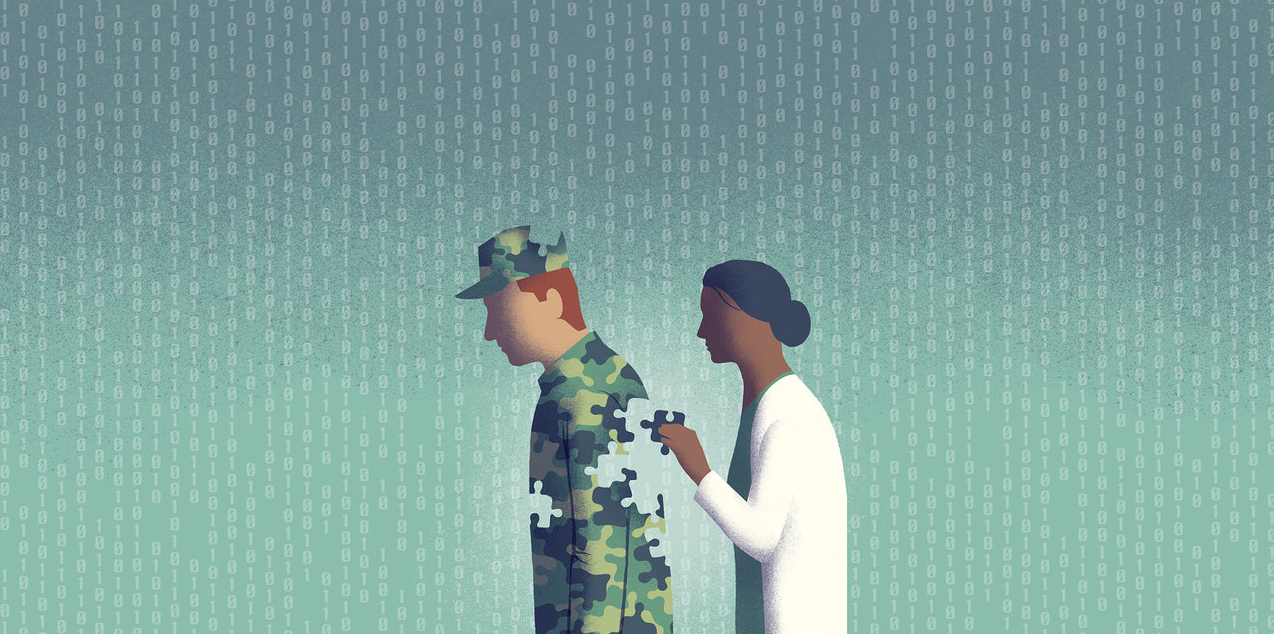
Post-traumatic stress disorder is not a sentence. Although the symptoms of PTSD may seem debilitating and even overwhelming, effective rehabilitation is possible.
For the military, it is especially important that rehabilitation goes beyond medication or psychotherapy. Returning to a peaceful life is not an instantaneous process, but a gradual restoration of internal control and trust in the world and oneself.
The following steps are not a substitute for professional intervention, but they are fundamental for any veteran who wants to start the journey to recovery. Their importance is confirmed by both international practice and the experience of Ukrainian specialists.
Self-regulation of the nervous system
One of the main challenges for a person with PTSD is the feeling that they have lost control of their own body and reactions. In a state of constant tension, even minor triggers can cause a powerful wave of anxiety, anger or panic. Self-regulation is the first step to regaining this control.
Self-regulation practices help to stabilise the nervous system and get out of the ‘battlefield anxiety mode’. It is important to learn how to recognise when symptoms are intensifying and to have tools available to quickly calm yourself down.
One of the most effective methods is conscious breathing - slow, deep breaths in and out with concentration on the body. This signals the brain that the danger has passed and activates the parasympathetic system, which is responsible for recovery.
It is also useful to have an ‘anchor’ - an object or action that brings you back to a sense of safety here and now: a photo of loved ones, the smell of coffee, the sound of familiar music. Such sensory triggers help to interrupt the spiral of obsessive thoughts and bring yourself back to reality.
Self-regulation does not eliminate pain, but it gives a person a means of managing it. And this is a powerful step towards healing.
The benefits of movement
Physical activity is one of the easiest and most effective ways to support mental health for servicemen and women with PTSD. Regular exercise helps to reduce the level of stress hormones such as adrenaline and cortisol and promotes the release of endorphins, natural neurotransmitters that improve mood.
Importantly, movement affects more than just brain chemistry. It helps to restore the connection with the body, which is often disrupted by trauma. Rhythmic exercises, such as running, swimming, cycling, dancing or martial arts, can help focus attention on the present moment and interrupt the flow of intrusive thoughts.
For veterans, it can also be a way to structure the day, set goals, overcome internal resistance and feel strong again. It is not necessary to exercise intensively - sometimes even half an hour of walking or a light warm-up in the morning can stabilise the condition.
Physical movement is action. And action is a counterweight to the powerlessness that often accompanies PTSD.
Help from loved ones
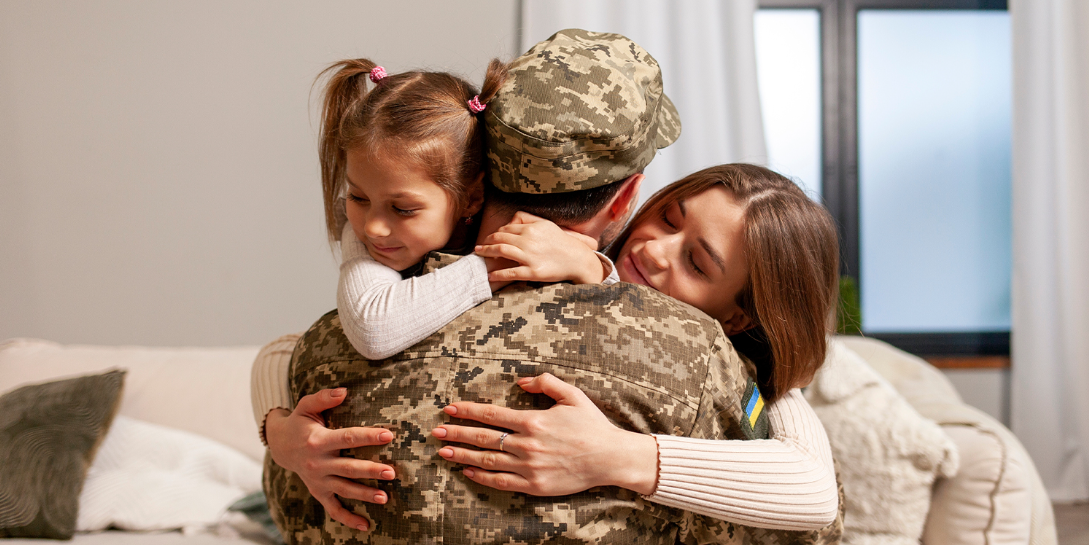
No soldier goes through war alone, and recovery from PTSD is rarely possible without the support of loved ones. The presence of trusted people who can listen without judgement and make you feel safe and accepted is critical to recovery.
For military personnel who have experienced severe trauma, it is very common to feel alienated - as if no one else understands them. In such cases, even a simple stay with family members, shared silence or a quiet walk can have a therapeutic effect. It is not necessary to talk about the war if a person is not ready - it is important to make it clear that they are not alone.
The initiative should be gentle: ‘I'm here when you want to talk’, “You can share and I will listen”. Advice such as ‘forget it’ or ‘pull yourself together’ should be avoided, as this only deepens the feeling of isolation.
The support of fellow veterans is especially valuable, as they are often the ones who understand without words. Veterans' support groups are another way to give a person the space to be heard among those who have experienced similar events.
General body care
The mind and body are a single system. And when a person lives with constant tension, traumatic memories and anxiety, not only their thoughts or mood suffer, but also their physical condition. That's why it's important to restore yourself holistically - by taking care of your body.
First and foremost, we are talking about sleep. Without quality sleep, the brain cannot process the accumulated emotional experience. If a soldier does not sleep properly, anxiety, irritability, and depression only increase. Developing a stable evening ritual - a warm shower, silence, dimmed lights - helps to set the body up for rest.
Nutrition is no less important. A diet rich in omega-3s, protein, vegetables, and foods that maintain blood sugar balance helps to stabilise the emotional background. Excessive consumption of alcohol, coffee, sweets, or tobacco, on the other hand, can provoke mood swings and agitation.
Bodily relaxation practices such as yoga, massage, stretching, and warm baths are also useful. They help to ‘switch off’ the over-excited nervous system and give the body a signal: ‘You are safe’.
Body care is not an afterthought. It is a powerful foundation that creates the conditions for mental recovery.
Professional help

Post-traumatic stress disorder does not disappear on its own - and recognising this is a sign of strength, not weakness. Seeking professional help is not a sign of ‘inability to cope’, but rather a conscious choice in favour of recovery. This is especially important for the military, as combat trauma has its own characteristics and requires a specialised approach.
Help can be provided both in state or military medical institutions and in specialised rehabilitation centres. In addition, there are many public initiatives in Ukraine today that provide free psychological support to veterans and their families.
A psychologist, psychiatrist, and psychotherapist can help you cope with anxiety, intrusive memories, depression, sleep disturbances, and other manifestations of PTSD. The specialist selects treatment methods individually: some people need psychotherapy, others need medication, and others need a combination of both approaches.
Therapy with specialists who have experience of working with combatants is considered particularly effective. It is easier for them to establish contact, understanding the context of the patient's situation.
Professional help is the beginning of the path back to yourself. And it is worth following.
Treatment of PTSD
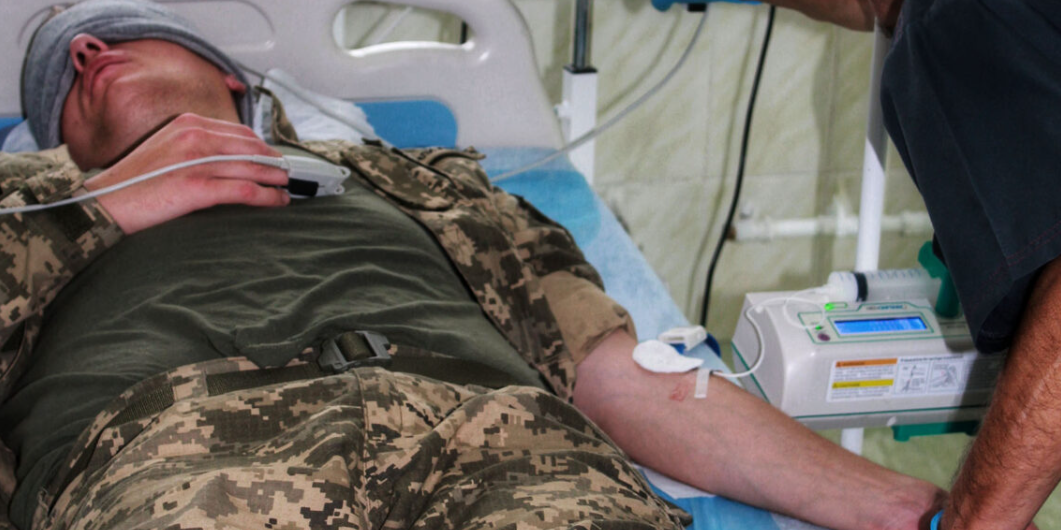
Treatment of post-traumatic stress disorder is a complex process that includes a combination of psychotherapy, pharmacotherapy and social support. The goal of treatment is not only to eliminate symptoms, but also to return a person to a sense of internal control, calmness and full functioning.
Psychotherapy is the basis of PTSD treatment. The best results are demonstrated by the following approaches:
- Cognitive Behavioural Therapy (CBT) - helps to change the perception of trauma, reduce guilt, anxiety, and teach coping with triggers.
- Trauma-focused CBT works directly with painful memories and their impact on behaviour.
- EMDR (Eye Movement Desensitisation and Reprocessing) is a scientifically based method that helps to ‘unlock’ stuck memories.
- Resource-based psychotherapy - works to restore internal supports that may have been destroyed by trauma.
Medication usually complements psychotherapy. Depending on the symptoms, your doctor may prescribe it:
- antidepressants (reduce anxiety, depressive symptoms);
- anxiolytics (to control acute anxiety - only for a short time);
- normothymics or neuroleptics - in case of severe emotional instability or sleep disorders.
Psychosocial rehabilitation is no less important. Returning to the community, work, new or old social roles - all this supports the effect of treatment and contributes to the gradual formation of post-traumatic growth.
Each case of PTSD is individual. But one thing remains the same: with the right approach, recovery is possible.
Prevention of PTSD
Post-traumatic stress disorder may not develop even if a person has experienced a traumatic event. It is important to understand that PTSD is not an automatic consequence of trauma, but the result of a combination of factors: the intensity of the experience, individual sensitivity, availability of support and the level of internal resilience. That is why prevention is of great importance.
Awareness of your emotional states and bodily reactions. If you experience sleep disturbances, aggressiveness, flashbacks or emotional deafness after a combat experience, these are not ‘weaknesses’ but signals that your body needs help. Ignoring these signs only aggravates the condition.
Create space for recovery. This means a measured load, communication with reliable people, physical activity, and a return to everyday rituals. It is especially important to avoid isolation, which often fuels PTSD symptoms.
Seek support even before the onset of acute symptoms. Talking to a fellow soldier, volunteer, psychologist or even a relative can relieve tension and help you see the situation differently.
Finally, it is worth remembering your own resources. Faith, humour, a sense of duty, love for loved ones - all of these can become a psychological support in a difficult moment.
PTSD prevention is not about denying experience, but about making it safe for yourself. The sooner you start acting, the more chances you have to prevent trauma from becoming a disorder.
Conclusion
Post-traumatic stress disorder is a difficult but not hopeless condition. It is a natural reaction of the psyche to the unnatural circumstances in which the military find themselves: death, pain, constant threat. It is important to understand that PTSD is not a sign of weakness or mental ‘malfunction’. It is a consequence of excessive stress on a system that has been trying to survive until the last.
The earlier the disorder is detected, the more effective the treatment will be. But even if the symptoms last for years, the recovery process is possible. A person can not only return to a stable life, but also feel inner strength, new meanings, and a deeper connection with themselves and the world - all this is called post-traumatic growth.
Every veteran deserves respect, support and professional help. And the very understanding that they are not alone in this is already part of the healing process.
